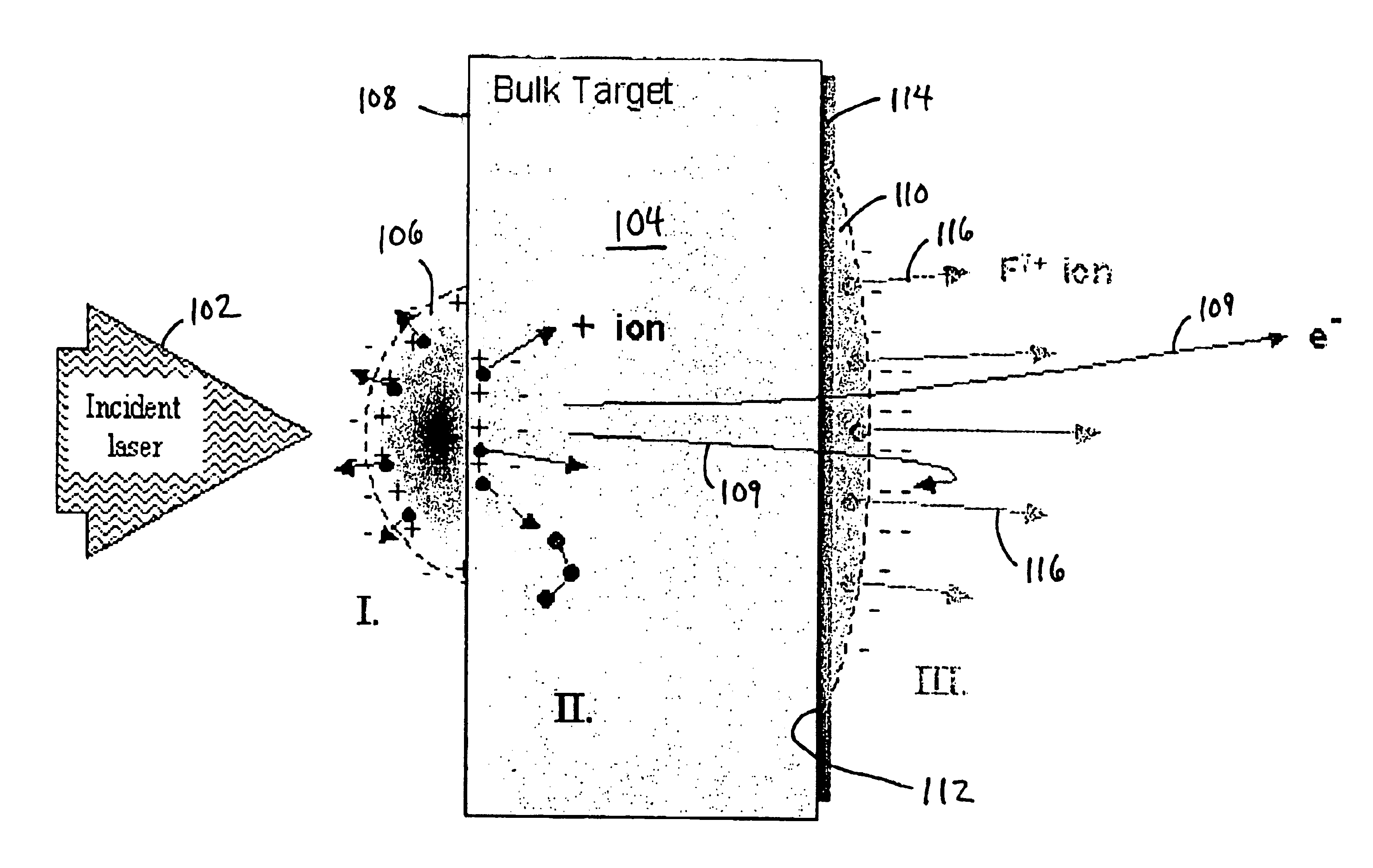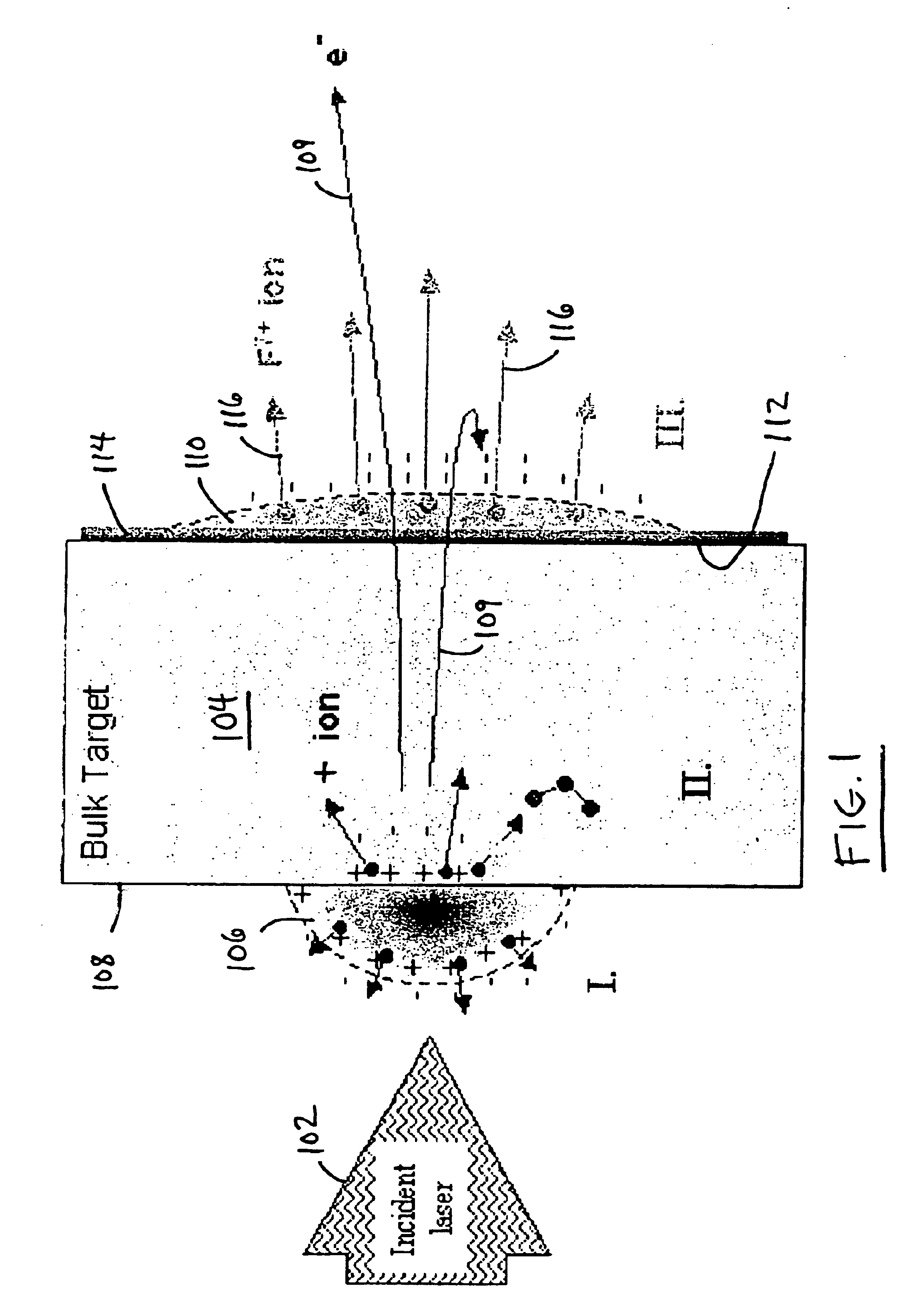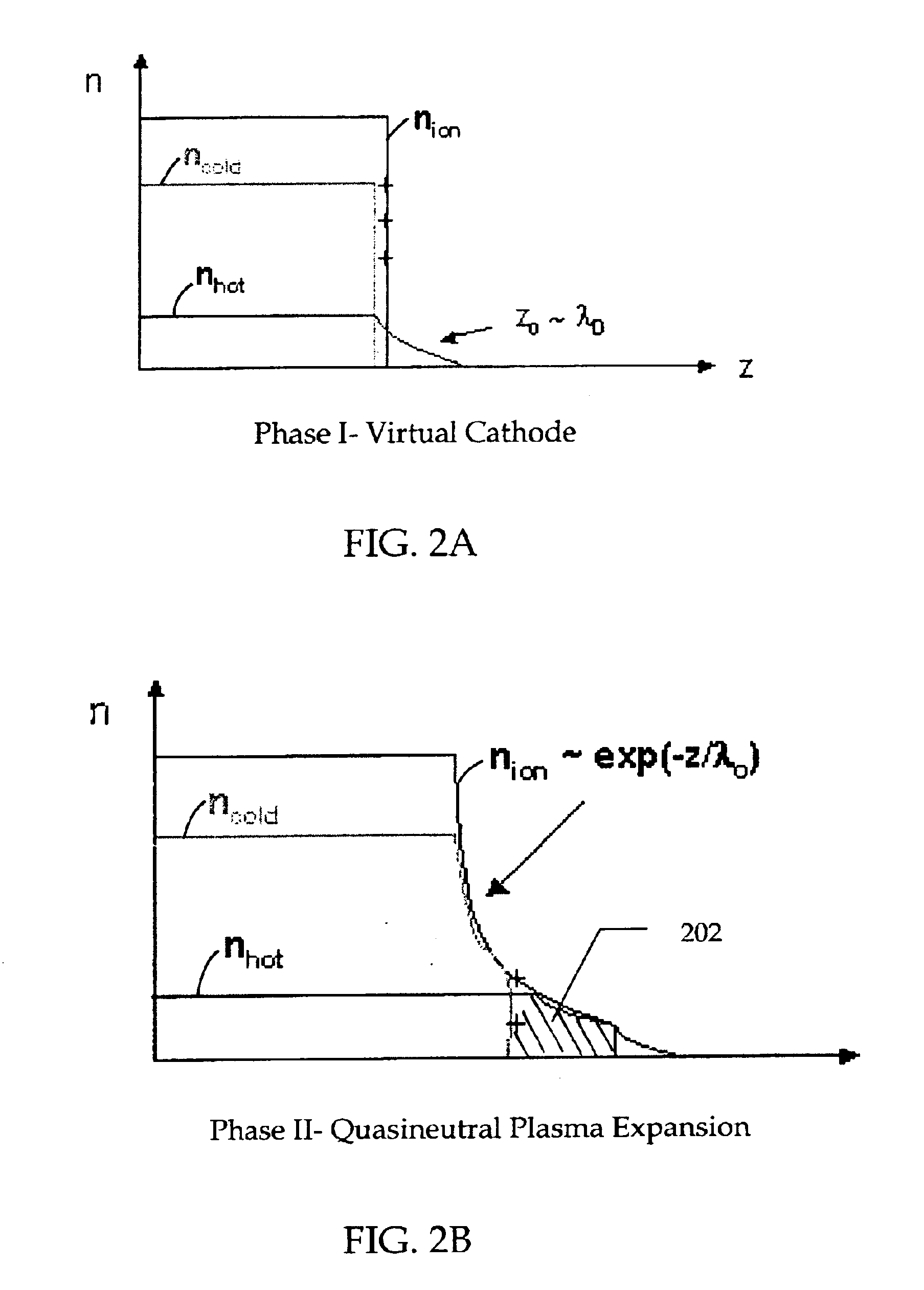Method and apparatus for nanometer-scale focusing and patterning of ultra-low emittance, multi-MeV proton and ion beams from a laser ion diode
a laser ion diode and nanometer-scale technology, applied in the field can solve the problems of limited focusability of ion beam technology, shortening exposure time, and current lengthening exposure time,
- Summary
- Abstract
- Description
- Claims
- Application Information
AI Technical Summary
Benefits of technology
Problems solved by technology
Method used
Image
Examples
example 1
A target in accordance with one embodiment of the invention was produced from gold foils, of 10 micron thickness, by vacuum deposition and electroplating on a structured mandrel. First, a copper mandrel was produced with machining marks, coated electroplated with gold, etched away the copper to produce a one-dimensional grating structure having 5 micron line spacing and approximately 300 nm depth. This grating structure is the non-irradiated surface of the target material. A photomicrograph of this 1-dimensional grating structure is illustrated in FIG. 7, which clearly illustrates the presence of horizontal lines. The grating structure of FIG. 7 is referred to as a one-dimensional grating structure since the pattern results in multiple lines formed in the grating structure extending in one dimension, e.g., horizontally. In other words, parallel linear troughs and peaks are formed in the non-irradiated surface of the target.
To test focusing and patterning with the target structure in...
example 2
In order to produce a target of 10 micron thickness from gold foils in accordance with another embodiment of the invention, vacuum deposition and electroplating were done on a structured mandrel. An optically flat glass substrate was coated with approximately a 500 nm thick photo-resist. For demonstration purposes, a two-dimensional grating image was exposed onto the resist, by the double exposure of a 1-dimensional grating (having 8 micron repeat), and rotated for the second exposure by approximately 90 degrees. The resist was etched, and then baked. A thin coating of gold was evaporated onto the photoresist structure, and then approximately 10 microns of gold were electroplated onto this layer. Finally, the photoresist was dissolved by immersion of the gold-covered substrate in a final etch solution, allowing the 10 micron thick gold layer to be removed from the substrate. Thus, the 2-dimensional grating structure was thereby directly transferred to the gold foil. This grating str...
PUM
| Property | Measurement | Unit |
|---|---|---|
| shape | aaaaa | aaaaa |
| conductive | aaaaa | aaaaa |
| dimensions | aaaaa | aaaaa |
Abstract
Description
Claims
Application Information
 Login to View More
Login to View More - R&D
- Intellectual Property
- Life Sciences
- Materials
- Tech Scout
- Unparalleled Data Quality
- Higher Quality Content
- 60% Fewer Hallucinations
Browse by: Latest US Patents, China's latest patents, Technical Efficacy Thesaurus, Application Domain, Technology Topic, Popular Technical Reports.
© 2025 PatSnap. All rights reserved.Legal|Privacy policy|Modern Slavery Act Transparency Statement|Sitemap|About US| Contact US: help@patsnap.com



